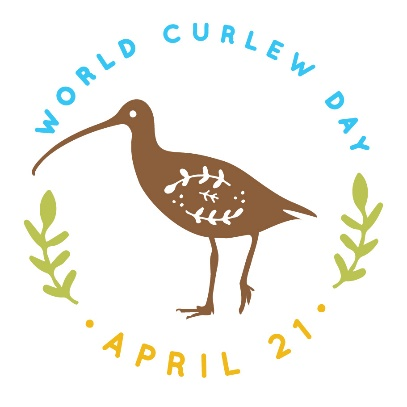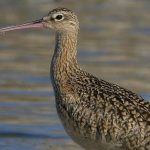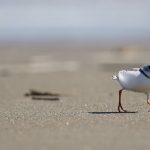Last week, on April 21, WHSRN partners across the globe celebrated World Curlew Day – a grass-roots initiative to raise awareness of the plight of curlews and to encourage activities to help them. Within the Americas, the four regularly occurring species of curlew are all considered of conservation concern. Eskimo Curlew Numenius borealis is almost certainly extinct, while the Bristle-thighed Curlew N. tahitiensis is considered Vulnerable by the IUCN Red List, and Whimbrel N. phaeopus and Long-billed Curlew N. americanus are listed as “High Concern” by the US Shorebird Conservation Plan.
The worrying status of the world’s curlews appears to be due to a series of threats on both the breeding and non-breeding grounds, affecting both breeding success and survival. However, a recent analysis of the status of the world’s curlews showed the greatest threats to be large-scale development on key passage and non-breeding sites.
Many of those key sites are part of WHSRN, and collectively make a significant contribution to the conservation of curlew species in the Americas. Twenty WHSRN sites have been specifically designated due to their importance for Whimbrel (13 sites) or Long-billed Curlew (7 sites). One site holds nearly 30% of the Atlantic coast population of Whimbrel during the boreal winter (Reentrâncias Maranhenses, in northern Brazil) and two sites hold over 10% of the same population on migration (the Georgia Barrier Islands, Georgia; and Cape Romain – Santee Delta Region, South Carolina, USA).
Designated in December 1991, Reentrâncias Maranhenses is one of the oldest and largest WHSRN sites in South America, covering nearly 2.7 million hectares of convoluted coastline, with many bays and estuaries, inshore islands, sandbanks, mudflats and mangroves. The Georgia Barrier Islands became WHSRN’s 100th site in October 2017. Each spring, this area on the coast of Georgia hosts one of the largest gatherings of Whimbrel in North America.
The Cape Romain – Santee Delta Region site celebrated a major accomplishment earlier this month – the site nearly doubled in size thanks to many years of private, state, and federal collaboration to better understand and protect shorebirds like Whimbrel. On Chiloé Island in southern Chile, the WHSRN site Eastern Wetlands of Chiloé supports a significant proportion of the Pacific coast wintering population of Whimbrel. The WHSRN Executive Office and Manomet’s Habitat Management team recently led a shorebird conservation workshop on Chiloé, where Whimbrel was one of the focal species.

To date, just one WHSRN site has been designated for Bristle-thighed Curlew, the Yukon Delta National Wildlife Refuge, where most of the species’ global population gathers prior to their southbound migration. Bristle-thighed Curlews spend the boreal winter on oceanic islands in the central Pacific, and while biogeographically outside of the Americas, many lie within the Western Hemisphere. According to Important Bird Area information, at least six sites qualify as potential WHSRN sites: Palmyra Atoll NWR (USA Minor Outlying Islands); Northwestern Hawaiian Islands (USA); Apataki, Arutua et Kaukura, and Motu de l’ouest et du sud de Rangiroa (French Polynesia); Millenium (Caroline) Island (Kiribati) and Oeno Island (to UK).
Curlews are iconic birds of wild, wet, evocative places – estuaries, mountain slopes, moorlands, grasslands and coast. One species that once numbered in the millions already appears to be lost forever. Together, WHSRN partners are committed to ensuring a healthy future for the remaining three species in the Americas.






